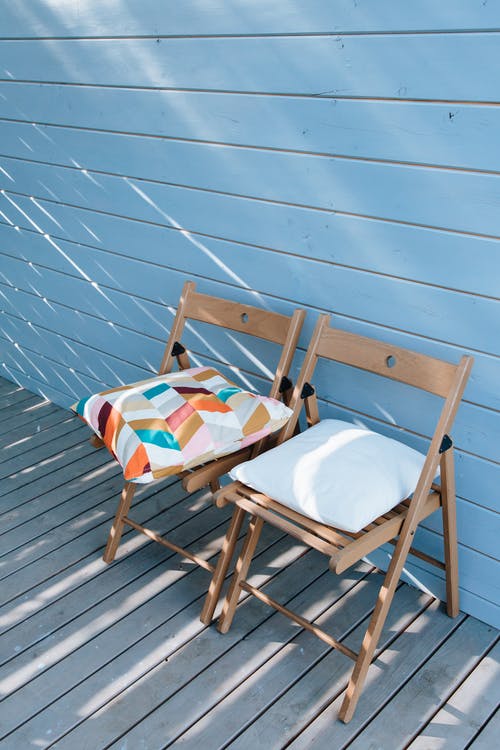When you buy a refrigerator, you read the reviews and want to know how long it will last. When you purchase a car, longevity is a high priority. We all want the best return on investment (ROI), especially when it comes to the place closest to our hearts: home.
A deck is no different. The good news is that a deck has a strong ROI, especially if you take a few steps to extend its longevity, such as using butyl tape.
Homeowners reap great value at home sales from smart outdoor projects. In fact, the 2021 Cost vs. Value Report by Remodeling Magazine lists both wood and composite deck additions as top-10 home improvements.
To extend the life of your deck and get maximum ROI, be proactive with maintenance and protection during construction. Consider these 7 tips.

Use Butyl Tape
As mentioned earlier, this flashing tape can help make your deck last longer. How? This rubbery flashing tape can be installed over the tops of your beams and joists at the time of construction and protect your wood from rot.
Butyl tape instantly adheres to most surfaces and has a high adhesion level. Because of its flexibility, it bonds well in applications where moisture is a factor, including on-deck foundations.
Some of the benefits of butyl tape include that it is less temperature-sensitive than other tapes, can be applied in a wide range of weather conditions, is more affordable than most acrylic tapes, is watertight, and helps create a tighter seal around decking screws and fasteners.
The cost is relatively low and even a DIY homeowner can use it.
Seal the Wood
Just as you need to protect your wooden joists and beams that hold up the deck, you also need to cover the decking boards on top.
If you installed wood decking, you will need to seal the boards every few years (note: composite boards do not need to be sealed).
To see if your wooden boards need a coat of sealant, put a few drops of water on top. If the water immediately sinks in, rather than beading on top (like a well-waxed car), you probably need to seal.
Most stains come with sealant, but you can also buy a clear seal. Be sure not to shake the can of sealant before applying as this can cause unwanted bubbles in the finish.
Take your time and apply multiple thin layers.
Keep Your Deck Clean
This one sounds simple, but it’s easy to allow a little pile of leaves to remain in the corner of the deck or to put potted plants on decks without risers.
Any debris or vegetation that sits on your deck boards can hold in moisture and create rot and discoloration. Sweep often and at least annually wash off the deck with soap and water.
Beware power washers that can cause splintering — be sure to lower the pressure and raise the spray wand a few inches.
If you love having plants on the deck, put a little space between the pot or vegetation and your deck boards.
Check Regularly for Maintenance Issues
At least annually, do an inspection of your deck or have a professional come by to make sure everything is in order.
About 6,000 people are injured each year when decks and balconies fail, according to the Consumer Product Safety Commission. Inspect your deck for spongy boards, loose fasteners and discolored wood.
Wood rot, especially dry rot, around the ledger board is especially dangerous, as this is the deck’s connection to the house. When the ledger board is rotten, the entire deck can collapse.
Protect Against Fire Damage
The greatest fire hazards on deck are gas grills, charcoal grills, and fire pits.
On average, more than 10,000 house fires are caused annually by grills, according to the National Fire Protection Association.
The leading area of origin for structure fires involving grills was an exterior balcony, deck, or open porch. To avoid fire, the NFPA recommends placing the grill well away from the home, deck railings, and out from under eaves and overhanging branches; keeping children and pets at least three feet away; cleaning the grill and removing grease; and never leaving the grill unattended.
For a fire pit, always use a fire-proof mat beneath or place the pit off the deck and away from any other structures.
Cut Back Vegetation
Leaves, vines, and branches can cause damage to the wood in your deck by holding in moisture. Additionally, overhanging branches can fall and crush your deck or furnishings. If you can’t DIY a fix, hire a professional arborist or landscaper to help.
Add a cover
A deck roof or awning that keeps water and sun off your deck can help it last longer. This amenity can also provide more time on deck as it protects you from the elements, too.
However, make sure there is good air circulation for your deck to avoid mold or mildew.
Taking these steps to be proactive will pay off when you sell your home. In the meantime, enjoy many seasons on your deck!






